The 50 Best Albums of 1971

Click here to read the full article on SPIN.
It’s become a cliché, even for post-Baby Boomers, to look back wistfully on the early ’70s as some kind of untouchable golden age for popular music. But when you survey all the era’s best albums in list form, it’s hard not to trust that instinct.
I mean…holy shit.
More from SPIN:
Nandi Bushell Makes Live Loop of Led Zeppelin’s ‘The Immigrant Song’
Watch Billy Corgan, Trent Reznor and More Cover David Bowie for Tribute Show
In 1971, the psychedelic era hadn’t completely wilted; prog was nearing its popularity apex; Motown was still a revolutionizing soul music; the folk-rock movement was in full flight. The possibilities were limitless.
You know it’s a banner year when 50 albums don’t begin to scratch the surface — when both John Lennon and Paul McCartney release definitive LPs and neither make the top 10. Was 1971 the greatest album year ever? We’ll save that debate for another time (or maybe another list).
For now, we present 50 stone-cold classics from a most malleable music year. – Ryan Reed
50. Janis Joplin – Pearl
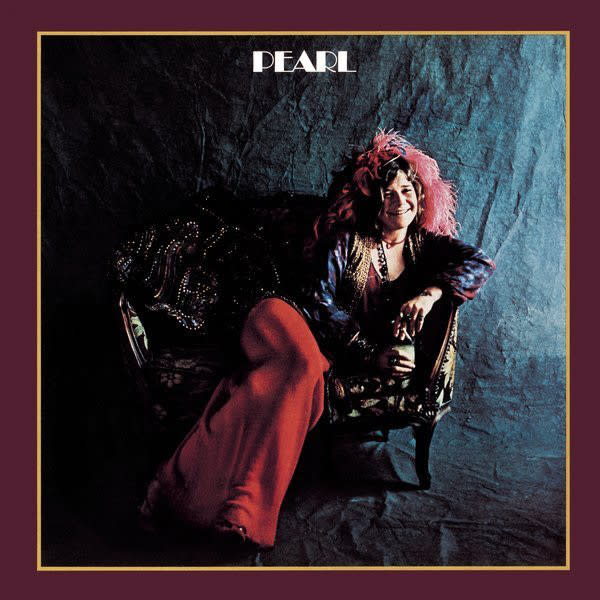
Credit: Columbia
Even beyond the grave, the feisty Janis Joplin refused to let her presence diminish. Pearl, the posthumous album released three months after her 1970 death, highlighted her evolution into a more mature sound. Here, she was no longer confined to the psychedelic band Big Brother and the Holding Company (but let’s be honest, can one really hide an enormous voice like hers?), and she was armed with songs sturdier than those on her 1969 debut. Bluesy, polished opener “Move Over” should have been a radio hit; “Cry Baby,” soaked in despair, is now a soul-blues standard; and her cover of Kris Kristofferson’s “Me and Bobby McGee” is an exciting twist on classic country. With Pearl, lovingly titled after her nickname, Joplin was more than just a 27 Club statistic — she became a singer of singular grandeur. - Bianca Gracie
49. Comus – First Utterance
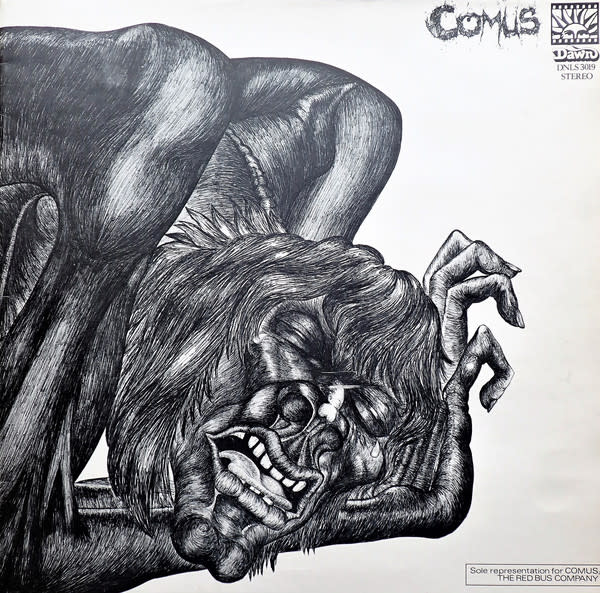
Credit: Dawn
This prog-folk gem, equally zany and unnerving, is not for the faint of heart. While new listeners may detect hints of King Crimson, Frank Zappa and early Pink Floyd on Comus’ debut LP, the British band occupied their own unique space on First Utterance. The album meanders from unintelligible, vibrato-heavy bellowing to viciously delivered refrains to disturbing raconteur tales (exploring subjects like hangings and mental illness). (Singer-guitarist Roger Wootton once described “Drip Drip” as a “psycho horror story partly inspired by horror films of the time,” noting, “Many writers invent these extreme characters on the edge of the human condition.”) It’s all bottled in experimental ballads both erratic in structure and instrumental technique, blending dissonant violin, baroque guitar and faery flutes — soundscapes that alternate between ethereal and ominous, often multiple times in a single song. – Logan Blake
48. Serge Gainsbourg – Histoire de Melody Nelson
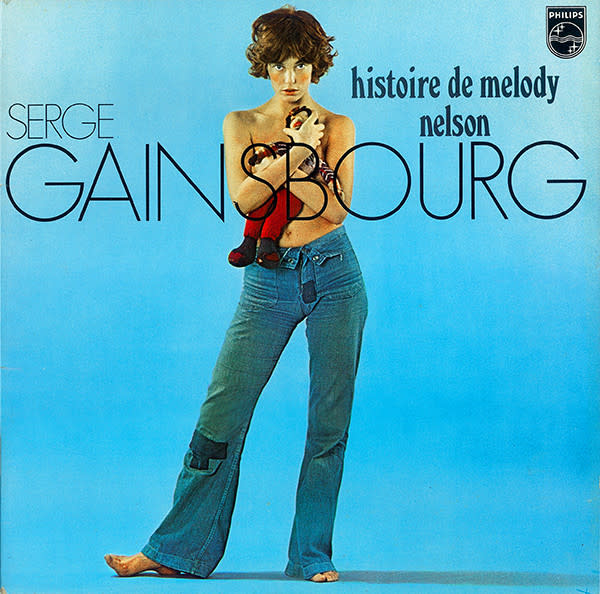
Credit: Philips
Serge Gainsbourg courted controversy with Histoire de Melody Nelson, a concept album about a middle-aged man seducing a young girl before her inexplicable death. (The latter character was voiced by his then-paramour Jane Birkin, who also posed topless on the cover.) The songwriter, assisted by arranger Jean-Claude Vannier, created a dark and twisty world of jagged jazz guitar lines, embellished string sections and breathy spoken-word — the kind of Gaelic cool that still sounds daring, even to high school French flunkies. It’s no wonder artists from Beck to Jarvis Cocker to Air still borrow the poet’s singular, swaggering style. While attempting to raise eyebrows, Gainsbourg succeeded in raising the bar. – Laura Studarus
47. Carly Simon – Anticipation
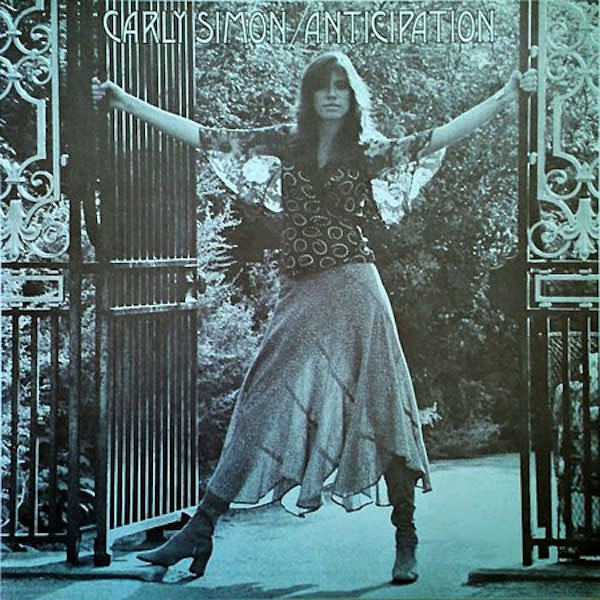
Credit: Elektra
In 1971, Carly Simon quickly became a pop superstar: winning the Grammy Award for Best New Artist and releasing her first two albums, Carly Simon followed by Anticipation. The latter’s title track — reportedly scribbled in the car before her date with Cat Stevens — became a massive radio single. But beneath the sheen of sudden fame, Simon’s early work reveals how her rich interior world, filled with melancholy and childhood nostalgia, informs her lyrics. On “Legend in Your Own Time,” for example, Simon sings about a boy who fulfills his dream of becoming a singer, only to realize the price of connection is a lifetime of loneliness. With “The Girl You Think You See,” Simon becomes a proto-Morrissey — debasing herself in the name of love while a cheerful melody plays on: “Whoever you want is exactly who / I’m more than willing to be.” It took decades for Simon’s songwriting skills to be properly recognized. But Anticipation’s relevance lives on in the music of her fans like Tori Amos, the Chicks’ Natalie Maines, and Taylor Swift — to name a few. – Sarah Grant
46. Jan Dukes de Grey – Mice and Rats in the Loft
Jan Dukes de Grey didn’t stand a chance at a long career — even during this wildly freewheeling year when epic-length songs and non-rock instrumentation were badges of honor, not crutches of the soon-to-be-extinct. But the British band’s cult classic second LP epitomizes the musical freedom of 1971. Mice and Rats in the Loft is a batshit-crazy masterpiece, with multi-instrumentalists Michael Bairstow and Derek Noy (accompanied by drummer Dennis Conlan) cramming every imaginable sonic shift into three restless tracks. The most famous is the 19-minute opener “Sun Symphonica,” which morphs from flowery post-psychedelia to sax-driven prog to soothing chamber-pop orchestrations. – Ryan Reed
45. Bonnie Raitt – Bonnie Raitt
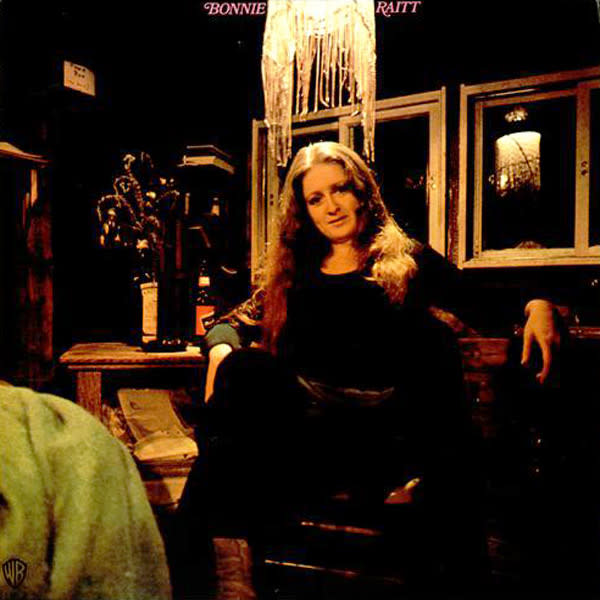
Credit: Warner Bros.
At just 22, Bonnie Raitt’s self-titled debut record made her a wunderkind of the early ‘70s folk scene. Though the album didn’t sell, critics marveled at her playing slide guitar with the ease of a pro, articulating between different hues of blues, folk, jazz and soul. The album covers an eclectic swathe of musical history, from old blues and jazz standards by Tommy Johnson, Robert Johnson and Buddy Johnson to Motown to Buffalo Springfield. But Raitt’s true north star was Sippie Wallace, a Chicago blues-jazz singer from the 1920s. Raitt was a student of Wallace’s career, including her 1966 comeback album. So Raitt bookended her debut LP with rollicking renditions of two Wallace songs (“Mighty Tight Woman” and “Women Be Wise”) — a fitting tribute to the artist who inspired her to sing in the first place. – S.G.
44. War – All Day Music
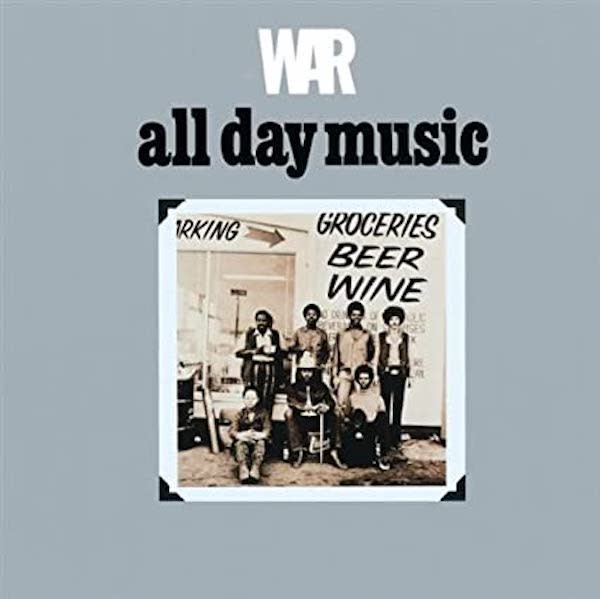
Credit: United Artists
War’s fourth album — and second without Animals frontman Eric Burdon — was a breakthrough for the funk-rock septet, kicking off a string of gold albums thanks to the massive groove of the single “Slippin’ Into Darkness.” But the album’s centerpiece, the seven-minute “That’s What Love Will Do,” is a cinematic ballad, anchored by an insistent kick drum pattern and showcasing Charles Miller on flute and saxophone. All Day Music cemented the omnivorous Long Beach band’s kitchen-sink aesthetic, featuring Lee Oskar’s twangy harmonica leads, conga-driven funk and the guitar-heavy live cut “Baby Brother.” – Al Shipley
43. Booker T & The M.G.’s – Melting Pot
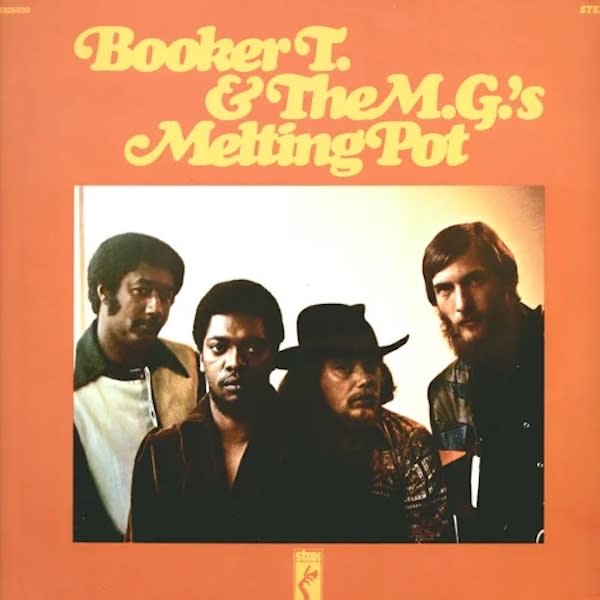
Credit: Stax
Melting Pot is the final studio album from the original M.G.’s: Booker T. Jones, Al Jackson and those two underrated fellas from the Blues Brothers, Steve Cropper and Donald “Duck” Dunn. The interracial quartet, and one-time house band for Stax Records, went out with a bang: Their eight, often extended jams meld jazz, rock and soul, with Cropper getting all funky on the title track. These grooves have endured through sampling, used by everyone from hip-hop great Big Daddy Kane to R&B-pop act New Edition. - Jason Stahl
42. Fleetwood Mac – Future Games
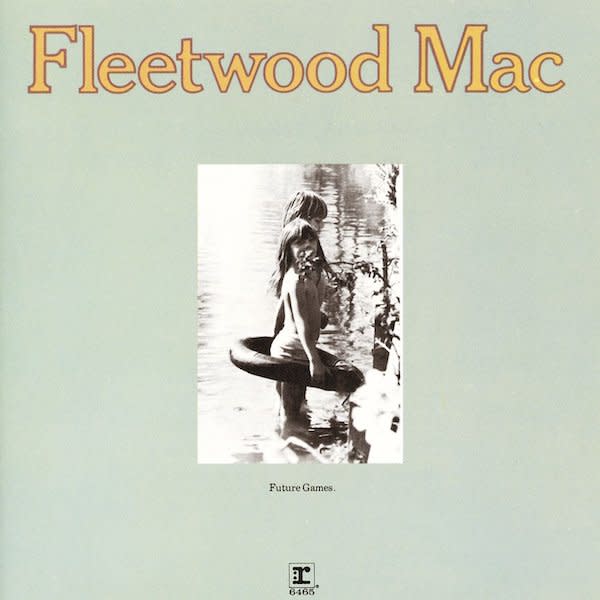
Credit: Reprise
Future Games marked a pivotal turning point for Fleetwood Mac: It was their first album with singer-guitarist Bob Welch and vocalist-keyboardist Christine McVie, who helped push the band’s previously bluesy sound into folk, soul, pop and psych. (McVie already had significant ties to the group, having married bassist John McVie in 1970, painted the cover of that year’s Kiln House and contributed uncredited material to that album.) Future Games is anchored by standout performances from both the new recruits: On his title track, Welch pours out dreamy electric guitar for eight minutes, that vibe lingering into guitarist Danny Kirwan’s “Sands of Time.” And McVie brings a similar lightness to closer “Show Me a Smile,” a tender ballad she nails with ease. – Tomas Miriti Pacheco and R.R.
41. Focus - Focus II (Moving Waves)
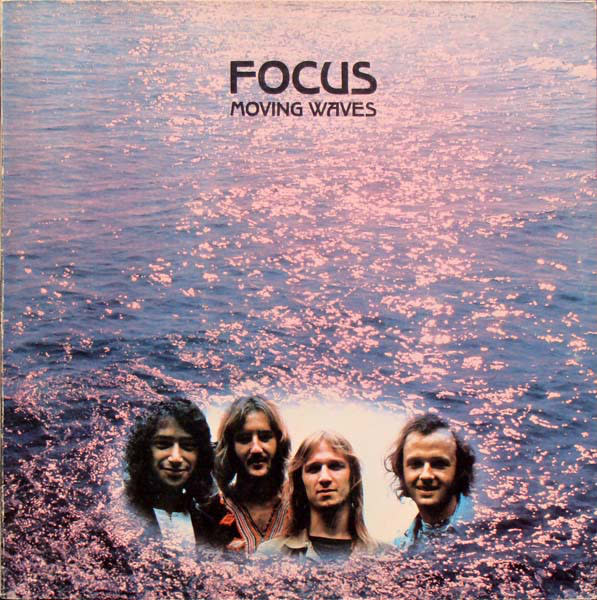
Credit: Blue Horizon
In 1971, if you wrote a hard rock song filled with yodeling, Appalachian beatboxing, classical Hammond organ, jazzy drum solos and full-blown shrieking, you had no reason to assume it wouldn’t be a hit. “Hocus Pocus,” which peaked at No. 9 on the Billboard Hot 100, is the obvious centerpiece from Focus’ second LP. But the Dutch quartet were far from a novelty act, stretching out into oceanic guitar interludes (“Le Clochard”), flute-heavy balladry (“Janis”) and winding prog (the 23-minute “Eruption”). Come for the yodeling, stay for the…everything. – R.R.
40. The Stylistics – The Stylistics
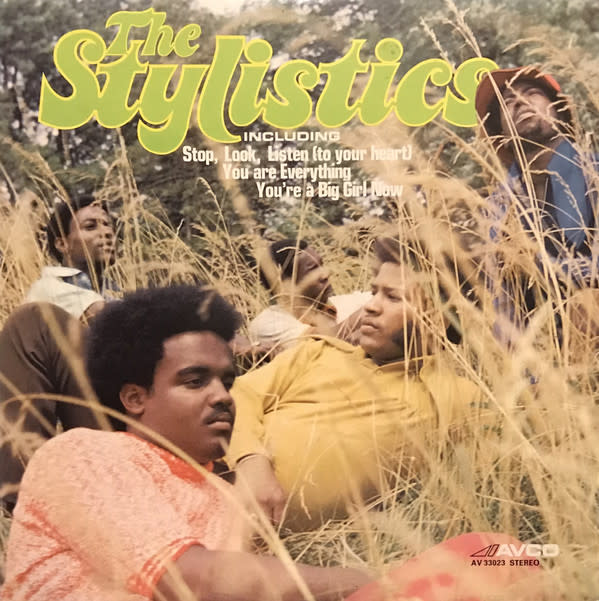
Credit: Avco
Any pop star with a hit love ballad after 1980 — Whitney to Mariah to Timberlake to Usher to Bruno — owes a major debt of gratitude to Philadelphia soul music. And no group epitomized that diaphanous era quite like the Stylistics. Led by tenor Russell Thompkins, Jr., the group’s debut was an overnight success, scoring a handful of hits on Billboard’s R&B, Pop and Adult Contemporary charts. Behind the velvet curtain, The Stylistics forged the brief but prolific songwriting duo of Thom Bell and Linda Creed, who co-wrote legendary ballads like “Stop, Look, Listen (to Your Heart),” “Betcha By Golly, Wow” and “You Are Everything.” At the time, Bell/Creed were an unlikely pair: He was a Grammy-nominated producer nicknamed “the Black Burt Bacharach,” and she was a white singer-lyricist who broke through with a Dusty Springfield hit. As different as they were, Bell and Creed both understood the strange magic of Philly soul — and with the Stylistics as their canvas, they created some of the most unfathomably romantic songs of all time. – S.G.
39. Van Der Graaf Generator – Pawn Hearts
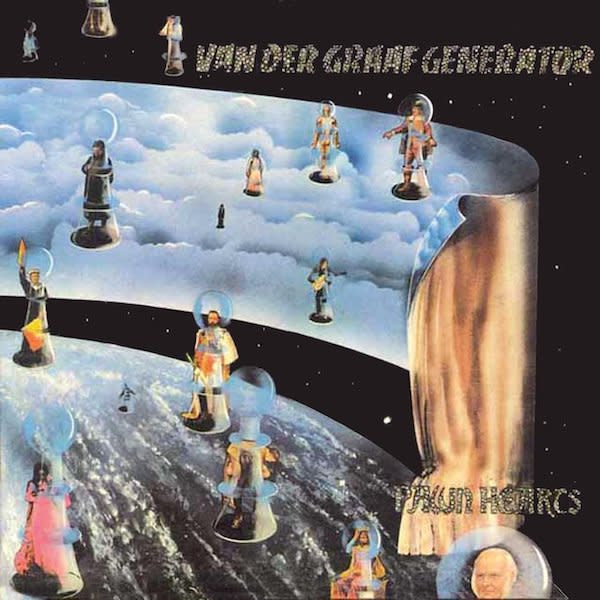
“Part of the drive was just for it to be visceral, immediate, active,” Peter Hammill told NPR in 2008, describing Van Der Graaf Generator’s abrasive, aggressive form of prog-rock. “And actually, I think, yeah, we picked up quite lot of audience at that time who wouldn’t have remotely dreamed of going to see ELP or Yes, for instance.” Pawn Hearts, the British band’s fourth LP, epitomizes that blend of top-shelf chops and punk-friendly energy. Hammill sings every one of these songs, including the 23-minute epic “A Plague of Lighthouse Keepers,” like a deranged Shakespearian actor selling his performance for the back row. And the band’s mish-mashed sound — jazzy drums, dramatic piano, harsh organs, menacing woodwinds — is unlike any other under the prog umbrella. – R.R.
38. Elton John – Madman Across the Water
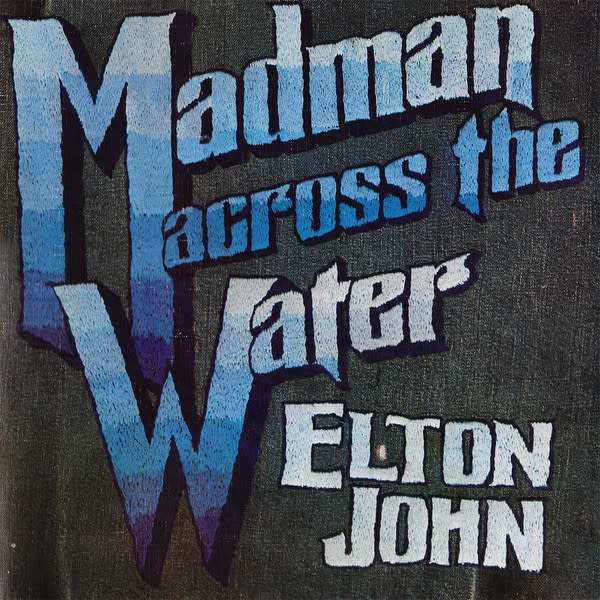
Credit: DJM
Elton John’s grandly arranged fourth studio LP — his third overall ‘71 release, following a soundtrack for the U.K. teen film Friends and his first live album, 11-17-70 — is known for the immensity of its first two tracks: catalog staples “Tiny Dancer” and “Levon.” Kudos to British composer Paul Buckmaster, whose definitive string arrangements provided the ambitious sweep that informed John’s subsequent releases, namely his 1973 masterstroke, Goodbye Yellow Brick Road. Brooding and bold, Madman was a stark departure from its predecessor, the 1970 country concept album Tumbleweed Connection, and didn’t sell particularly well in the U.K., reaching only No. 41. (It hit No. 8 on Billboard’s U.S. Pop Albums chart). Fifty years later, casual fans remember only the mammoth singles, though John still employs the booming, seven-minute opus “Indian Sunset” as a concert showstopper. – Bobby Olivier
37. Curtis Mayfield – Roots
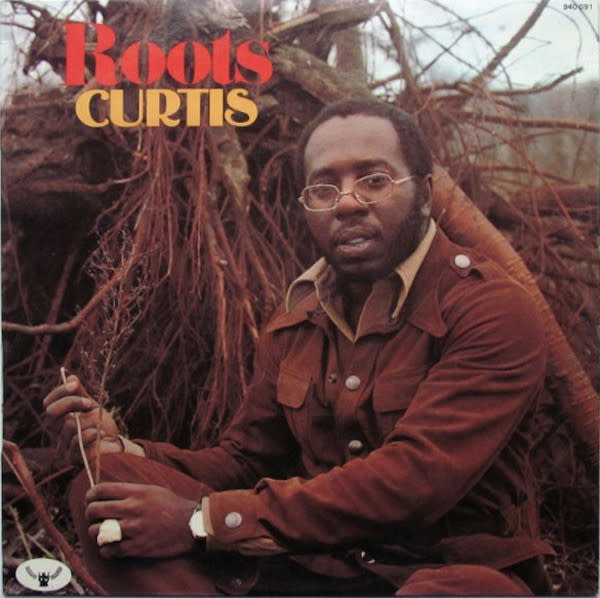
Roots, Curtis Mayfield’s 1971 opus, is a sprawling soul soundscape, filled with joyous melodies and effortless grooves. Its lengthy anthems are cries for peace and unity; his extraordinary, almost weepy singing accents the urgency of these pleas. Mixed in with these calls to action are textured love songs layered with yelps, shouts and groaning horns. As a whole, the album demands togetherness — Mayfield reaches out sincerely to his audience, leaving every emotion on wax. – T.M.P.
36. Emerson, Lake & Palmer - Tarkus
Let’s pause for a second and recognize the absurdity that both these statements are true: ELP’s second LP opened with a wailing, 21-minute epic more monstrous than the armadillo tank on the cover, and the record somehow peaked at No. 9 on the Billboard 200. Tarkus’ title piece would be just as powerful at half the runtime (and half the Hammond organ solos), but it’s still among the most ambitious rock songs of 1971 — splitting the difference between the tightly composed Yes epic “Close to the Edge” and Genesis’ manically sprawling “Supper’s Ready,” both of which arrived the following year. “Tarkus” inevitably overshadows the rest of the album, but there are some treasures on the back half, including the snappy, psych-saloon fusion of “Bitches Crystal.” - R.R.
35. Gong - Camembert Electrique
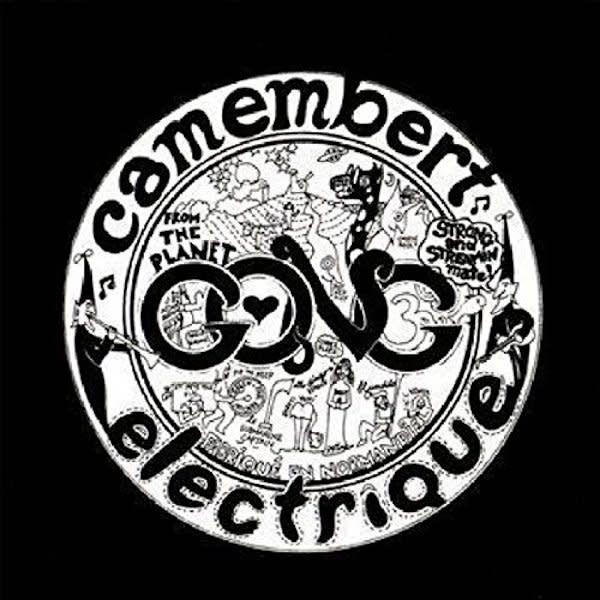
Credit: BYG
It’s sloppier and more abrasive than their classic Radio Gnome Invisible trilogy, but Gong’s second album fully cemented their psych-prog wackiness. Bandleader Daevid Allen’s knotty songs wander through warped vocal hooks, jazz-rock riffs (accentuated by the woodwinds of Didier Malherbe) and the orgasmic “space whispers” of Gilli Smyth. The best restlessly browse through all those vibes: “You Can’t Kill Me” almost recalls King Crimson’s “21st Century Schizoid Man” with its hybrid of metallic, chromatic heaviness and jazzy chops. But it’s hard to imagine Greg Lake singing a line as spacey as “You’re really only me if you’d only remember.” - R.R.
34. Santana – Santana (Santana III)
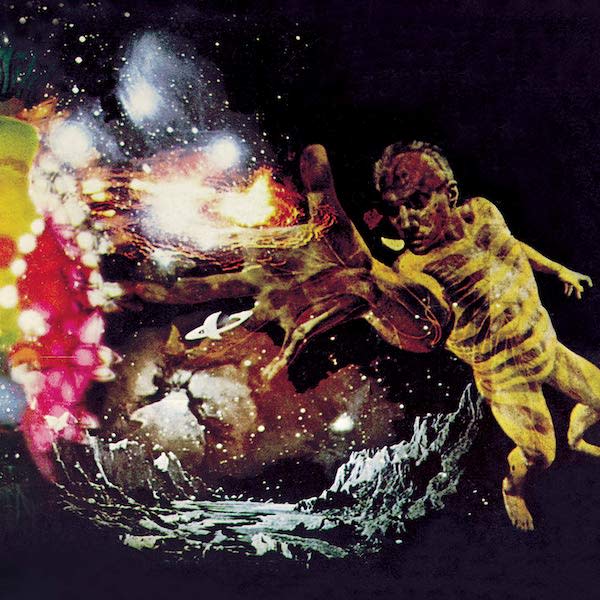
Credit: Columbia
Neal Schon flourished as an arena rock God in Journey, but he began his career as a 17-year-old guitar wizard on Santana’s third studio LP. His exuberant playing nearly matches maestro Carlos Santana throughout the album, pushing the septet’s Latin-rock grooves into funkier, more explosive territory. The radio staple is their modest hit “No One to Depend On,” the most streamlined tune of the bunch. But Santana’s percussive, wall-to-wall attack reaches ecstatic muso heights on “Toussaint L’Overture” and “Everybody’s Everything,” the latter backed by the Tower of Power horn section. – R.R.
33. Harry Nilsson - Nilsson Schmilsson
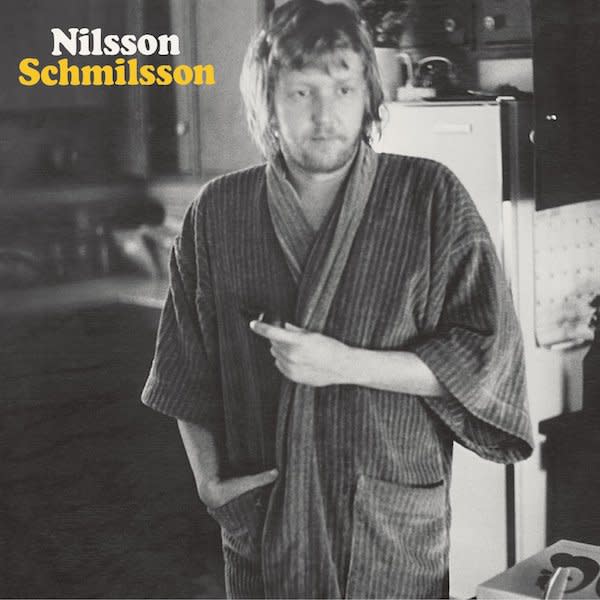
Credit: RCA Victor
Harry Nilsson deserves to be as well known as Randy Newman, another insanely talented writer of poignant, often quirky pop. And newcomers should start with Nilsson Schmilsson, his seventh and most famous LP. Opener “Gotta Get Up” is now familiar as an endlessly looping tune from the 2019 series Russian Doll, while the calypso-tinged hit “Coconut” remains a delightful slice of near-novelty. The heartrending ballad “Without You” manages to induce chills while avoiding sappiness — a welcome hallmark of Nilsson’s most timeless compositions. But the LP’s standout is the frenetic seven-minute version of “Jump Into the Fire,” discovered by many thanks to a crucial scene in Goodfellas (and later covered by late Nilsson fan Chris Cornell). - Katherine Turman
32. Alice Coltrane – Journey In Satchidananda
The title of Alice Coltrane’s fourth solo LP nods to her spiritual advisor Swami Satchidananda. It’s a fitting allusion: The album, splitting the difference between modal jazz meditation and Eastern drone, washes over like a whisper from the divine. On the opening title track, Coltrane’s harp ripples out, dream sequence style, over a grainy tanpura, as Pharaoh Sanders gently — then dizzyingly — glides around his soprano sax in a feat of superhuman breath control. The centerpiece, “Something About John Coltrane,” is named after another crucial figure, her late husband. The piece rattles and stammers and prods, with piano and sax and bells blissfully teetering between cacophony and cosmic melody. – R.R.
31. The Beach Boys – Surf’s Up
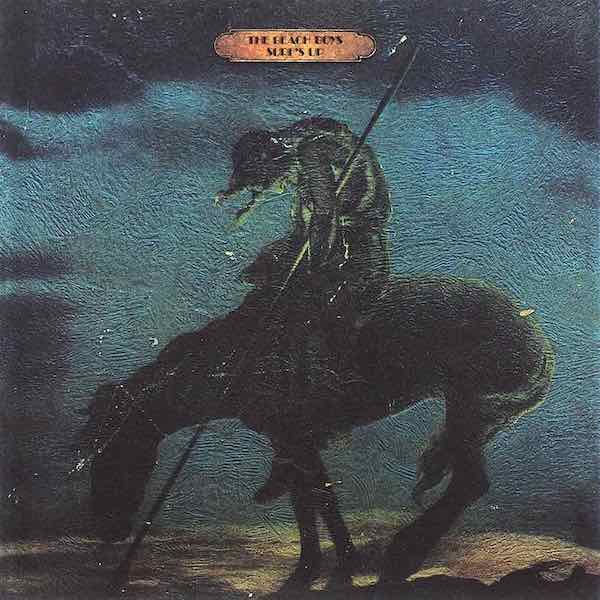
Credit: Reprise
Though they hit their creative peak half a decade earlier, the Beach Boys still had some interesting songs left in their arsenal. With Brian Wilson less involved than on 1970’s Sunflower, the group became even more democratic on the kaleidoscopic Surf’s Up: Even Carl Wilson, an infrequent writer, was more creatively active, co-penning the synth-heavy jazz-rocker “Feel Flows” and intricate psych-pop tune “Long Promised Road.” Even with an edgier, more layered sound, the band’s 17th album was still catchy as hell — though not as widely accessible as their previous records. Songs like “Student Demonstration Time” (a take on “Riot in Cell Block Number 9″), “A Day in the Life of a Tree” and “Don’t Go Near the Water” added more of a social conscience. And the title track — not a song about surfing — is both the LP’s highlight and a majestic leftover from Brian’s then-unfinished opus, SMiLE. Surf’s Up’s progressive pop style resulted in one of their last great LPs. – Daniel Kohn
30. Al Green – Al Green Gets Next to You
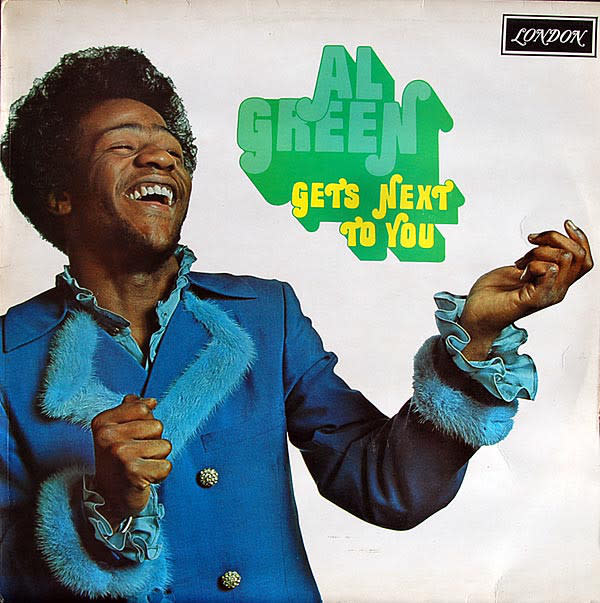
Credit: London
Al Green Gets Next to You defined the singer’s vocal sound. After years of trying in vain to find an audience by emulating his music heroes — Jackie Wilson, Sam Cooke and Wilson Pickett — Green signed to the label of Memphis record producer Willie Mitchell. At Hi Records, Mitchell elicited the gentle ache in Green’s voice by knocking back the tempo and throwing some curveballs with his Hi Rhythm Section. The result is a glorious brew of soul, blues, gospel and funk. Green recasts the Temptations’ “I Can’t Get Next to You” as a sultry aria. The Doors’ tootling “Light My Fire” becomes a bouquet of brass. Green lets his voice ring beatifically on Little Johnny Taylor’s “God Is Standing By” — but on the next track, the original “Tired of Being Alone, that righteousness dwindles to a plea that grows more forlorn with every measure. – S.G.
29. Flower Travellin’ Band - Satori
Flower Travellin’ Band’s second record opens with one of the great fake-outs in rock history: After one barely audible, unconfident note from what sounds like a flute, Joe Yamanaka barks out a throat-shredding scream — pulling us jarringly into the sinister psych-metal landscapes of Satori. The Japanese quartet maintain that Sabbath-like heaviness throughout the five-track LP, from the bluesy grind and overdriven guitar leads of “Satori Part II” to the jagged, staccato riffs of “Satori Part V.” A semi-lost classic. - R.R.
28. Cat Stevens – Teaser and the Firecat
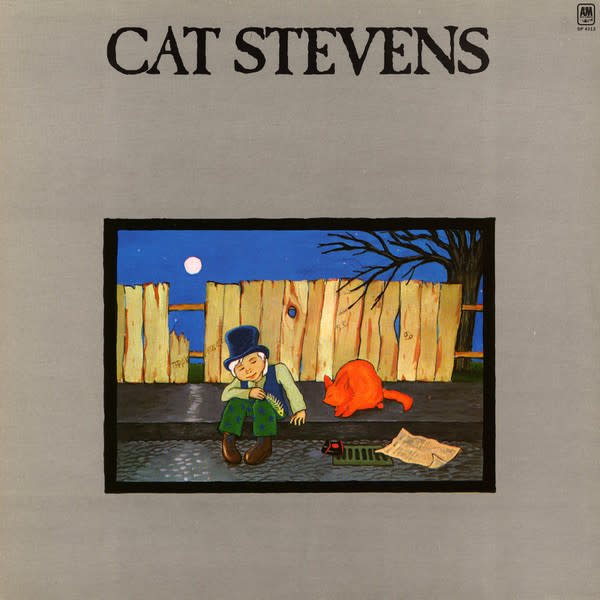
Credit: A&M
Cat Stevens’ triple-platinum fifth LP contains three of his most-cherished folk-rock hits: the sweetly strummed “Moonshadow,” a cover of the Christian hymn “Morning Has Broken” and the perky “Peace Train,” which became the singer’s first top 10 U.S. single. Stevens — who changed his name to Yusuf Islam after converting to Islam in 1977 — also wrote and illustrated a Teaser and the Firecat children’s book, about a man and his cat who try to put the moon back in the sky after it falls to Earth with a “thump.” – Liza Lentini
27. Gentle Giant - Acquiring the Taste
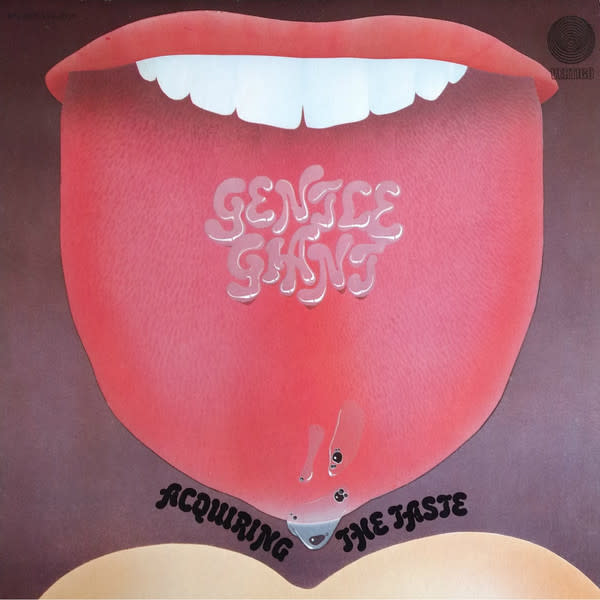
Credit: Vertigo
They were too uncommercial to achieve the same widespread prog credentials as Genesis, Yes or ELP. But outside of a brief sonic streamlining in the late ’70s and early ’80s, Gentle Giant were the most committed to the genre’s ideals. Their second LP came with the following mission statement on the sleeve: “It is our goal to expand the frontiers of contemporary popular music at the risk of being very unpopular.” In a sense, they failed — no major rock bands followed the lead of their complex, dissonant vocal harmonies (“Pantagruel’s Nativity”) or unorthodox instrumentation (the xylophone and tympani of “Edge of Twilight”). Except Gentle Giant, of course: Acquiring the Taste was just the beginning. – R.R.
26. Stevie Wonder – Where I’m Coming From
On Where I’m Coming From, Stevie Wonder began to shape his ever-ecstatic vocals around his own identity. Trim love anthems like “If You Really Love Me” meet lengthier, more expansive tracks like “Do Yourself a Favor” and “I Wanna Talk To You,” revealing Wonder’s interest in exploring social issues through his music (an approach that labelmate Marvin Gaye would follow up on a month later with What’s Going On). The album, self-produced by Wonder and co-written by his then-wife, Syreeta Wright, cemented his now-familiar image as a virtuosic singer and ambassador of positive thinking. – T.M.P.
25. T. Rex - Electric Warrior
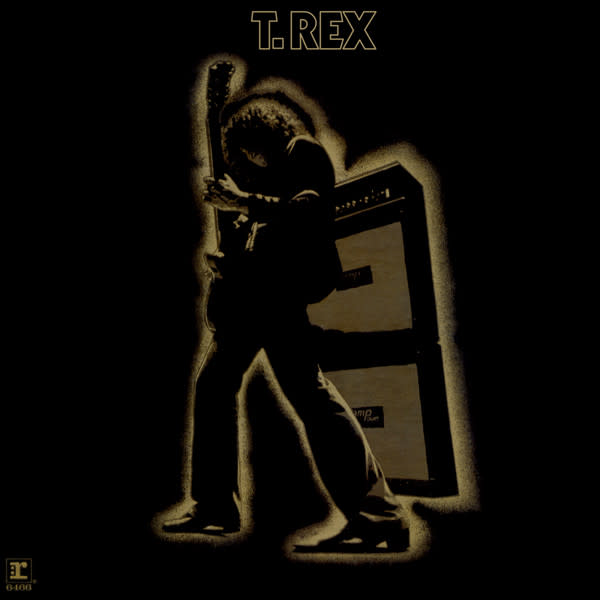
Credit: Reprise
T. Rex’s Electric Warrior exemplifies both the too-short British glam reign and the catchiest, most creative strains of blues-born ‘70s rock. Throughout the 11-track album — produced by Tony Visconti (David Bowie) and engineered by Roy Thomas Baker (Queen) — hits like “Bang a Gong (Get It On)” and “Jeepster” rub shoulders with equally classic deep cuts like the jagged “Rip Off” and “The Motivator,” which boasts a sexy strut. T. Rex, led by singer-songwriter Marc Bolan, honed to perfection a clap-along bubblegum-meets-mystical vibe on the aptly titled Electric Warrior. – K.T.
24. Caravan - In the Land of Grey and Pink
Many members of the so-called “Canterbury scene” have rejected that label, at least on a geographic basis. But this accidental British movement — which emerged during the late ’60s and flourished the following decade — still spawned some of the era’s quirkiest, most user-friendly prog tunes. The third Caravan album is definitive Canterbury, balancing silly pop songs about raining golf balls (“Golf Girl”) with jazzy, psychedelic instrumental workouts (the 23-minute “Nine Feet Underground”). - R.R.
23. The Doors - L.A. Woman
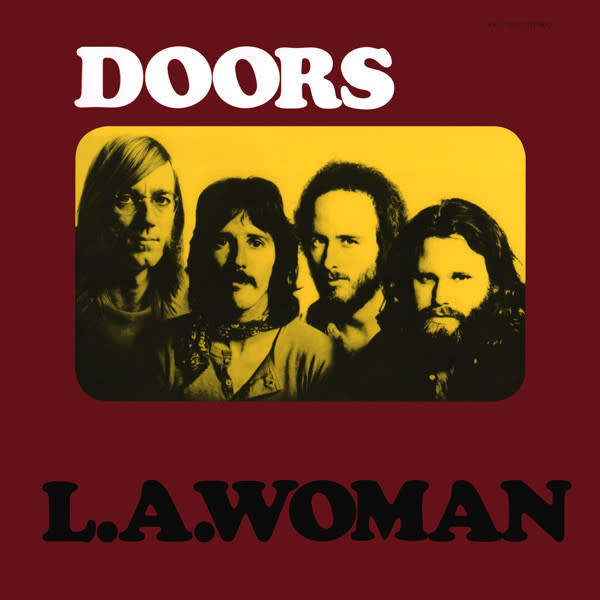
Jim Morrison’s final album, released three months before his death, is arguably the Doors’ single greatest effort — a searing blues-rock record that captured the band in the purest form since their debut (and avoided much of the frontman’s weighty pretension). Some bittersweet lore still surrounds “Riders on the Storm,” the last song Morrison ever recorded with the group. But even if that haunting closer didn’t appear on L.A. Woman, it’d still be a classic, led by Morrison’s raw, blistering vocal performance — highlighted on “The Changeling,” “Been Down So Long” and the nearly eight-minute title track, extolling his beloved “city of night.” The whole record demonstrates Morrison’s core commitment to the blues, more fervently focused here than on previous works. While the band played L.A. Woman material live only four times before Morrison’s death, the LP still sounds largely like a live record. It was laid down almost entirely in the room, without the more lush arrangements of producer mainstay Paul Rothchild, who’d polished every previous Doors album. The result was tight, furious playing and a fitting farewell for one of America’s most storied rock stars. – B.O.
22. Traffic – The Low Spark of High Heeled Boys
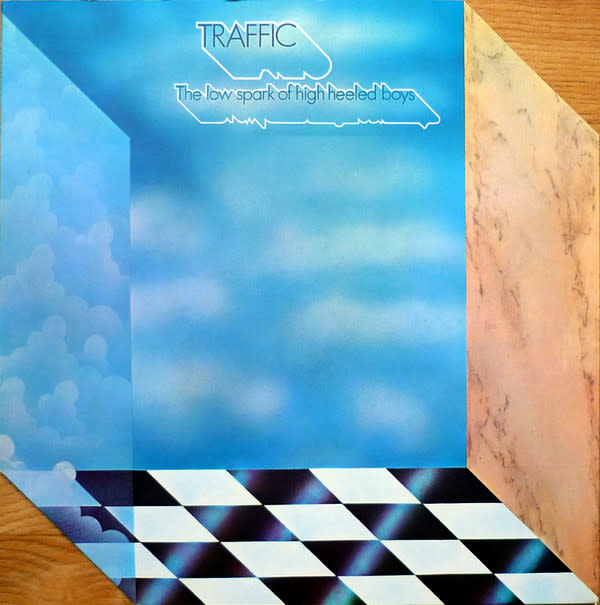
The 12-minute title track of Traffic’s fifth studio LP was never officially released as a single. That didn’t stop rock radio stations from playing it, highlighting one of the 1970s’ defining factors: listeners with fortitude. The Low Spark of High Heeled Boys also includes the very minor hit “Rock & Roll Stew,” co-written by drummer Jim Gordon and bassist Ric Grech. This is the only Traffic studio album to feature the duo, who brought power and versatility to the rhythm section. – L.L.
21. Pink Floyd - Meddle
Meddle is Pink Floyd’s bridge album between the group’s Syd Barrett-influenced psychedelic phase and their eventual stadium rock success. It’s not often mentioned in the same breath as the more popular The Dark Side of the Moon, Wish You Were Here or The Wall, which makes Meddle underrated but brilliant nonetheless. The album is best-known for two sonically diverging tracks: The first is the spacey, turbulent rock instrumental “One of These Days,” highlighted by the double-tracked bass of Roger Waters and David Gilmour. The second is the 23-minute epic “Echoes,” which occupies the vinyl LP’s entire second side. Marked by a repeating submarine-like “ping” at the very beginning, this sweeping, cinematic track seamlessly ebbs and flows through different styles, including ambient, funk and the avant-garde — a precursor of sorts to “Shine On You Crazy Diamond,” the band’s 1975 tribute to Barrett. – David Chiu
20. Bill Withers – Just as I Am
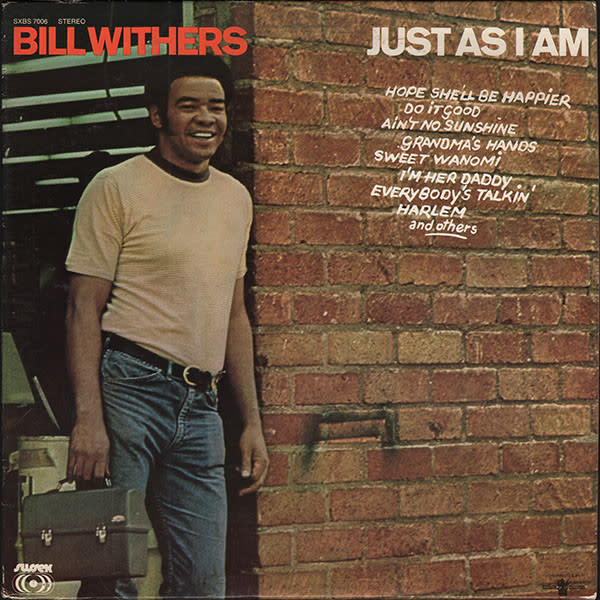
Bill Withers was famously still working at a factory when “Ain’t No Sunshine” debuted on the charts, but his debut album soon allowed the everyman soul singer to quit his day job. In the 2009 documentary Still Bill, Withers outlined how his lack of music industry experience contributed to indelible songs like “Grandma’s Hands” and “Ain’t No Sunshine,” which went straight to the chorus with no instrumental intro. “If nobody throws their rules at you, you might make a song with no introduction,” he said. “Instead of singing about romantic love all the time, you make a love song about your grandmother.” – A.S.
19. The Mahavishnu Orchestra – The Inner Mounting Flame
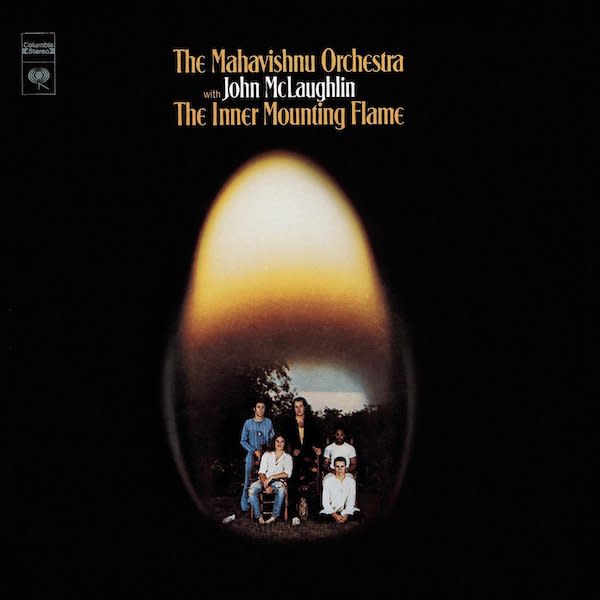
Credit: Columbia
People love to debate which album invented jazz-rock fusion. Most point to Miles Davis’ quiet 1969 masterpiece, In a Silent Way, which unofficially launched his “electric era.” But no LP better crystalizes the genre’s full range — the virtuosity, the vitality, the volume — than the Mahavishnu Orchestra’s debut. Most fusion albums through the early ’70s felt like jazz with a sprinkle of rock heaviness, but guitarist John McLaughlin, a veteran of Davis’ pioneering bands, used a more balanced recipe on The Inner Mounting Flame. Tracks like “Meeting of the Spirits” and “The Noonward Race” were largely grounded in jazz ostinatos, but McLaughin’s distorted solos and Billy Cobham’s funky, gargantuan drums reeled in a new audience who probably owned more Jimi Hendrix than Herbie Hancock. - R.R.
18. John Lennon – Imagine
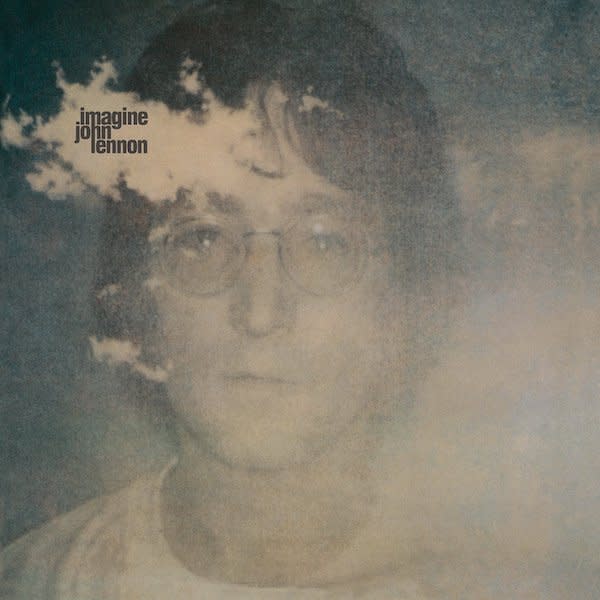
Imagine sits beside its predecessor, John Lennon/Plastic Ono Band, as the songwriter’s definitive solo work — a radiant merger of rock, folk, blues and pop. While the momentous title track is still exalted as a touchstone of peace and tranquility, the album itself was very much a product of Lennon’s many frustrations: Not only was he begging for an end to the Vietnam War, but he was also perturbed by his crumbling relationship with Paul McCartney. Those feelings, following his ex-bandmate’s court win to break the Beatles’ contractual partnership, fueled the proto-diss track “How Do You Sleep?” Elsewhere, the bluesy chugger “It’s So Hard” details Lennon’s disillusion with just about everything involving human existence — right down to the burden of eating and drinking to stay alive. The album’s overtly political cuts are even more resonant in 2021: the pissed-off protest tune “Gimme Some Truth” and haunting “I Don’t Want to Be a Soldier, Mama.” – B.O.
17. Can – Tago Mago
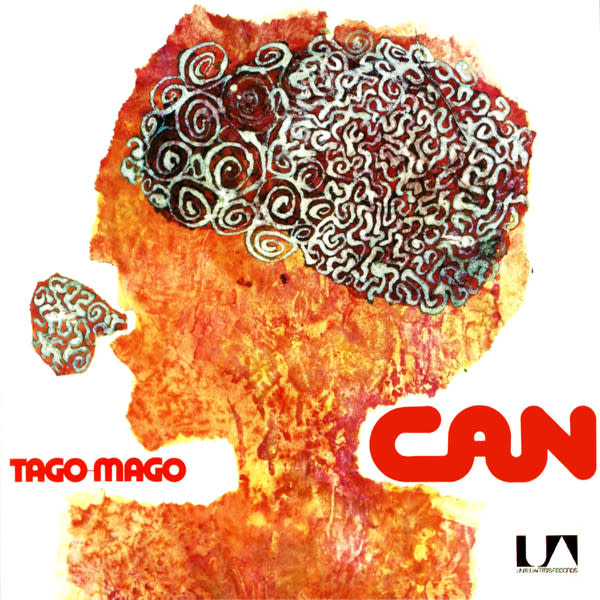
Credit: United Artists
On 1969’s Monster Movie, Can were already too dark and unnerving for the psychedelic movement. But it took months of experimentation — and the recruitment of singer Kenji “Damo” Suzuki, a former busker with a singular grasp of melody and chaos — for the krautrock band to flourish. Tago Mago, their second LP, is where the legend begins. Remnants of psych linger, like Michael Karoli’s hazy guitar riff on “Paperhouse.” But Can occupied their own planet here — colliding warped funk, aggressive noise and prog-like heft on the side two epic “Halleluhwah.” - R.R.
16. Genesis – Nursery Cryme
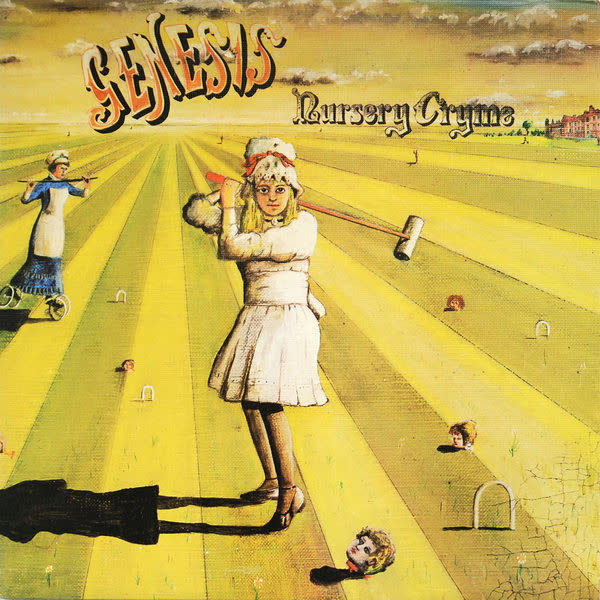
Credit: Charisma
Genesis’ third LP was a turning point (one of several, as it would later turn out) for the then-emerging band: It first introduced drummer Phil Collins and guitarist Steve Hackett, who joined Peter Gabriel, Tony Banks and Mike Rutherford to form the definitive Genesis lineup. These crucial new additions resulted in a dynamic record that marked an upgrade from its predecessor, 1970’s Trespass. With its clockwork musicianship and mythical, surreal lyrics, Nursery Cryme yielded a couple of numbers that became staples of their live repertoire and synonymous with the Gabriel era: “The Fountain of Salmacis,” “The Return of the Giant Hogweed” and the dramatic, 10-minute opener “The Musical Box.” A few gentle pastoral numbers are sandwiched in between the pomposity and whimsy, including the lovely “Harlequin” and “For Absent Friends,” the latter marking Collins’ first lead vocal for the band. – D.C.
15. Yes – The Yes Album
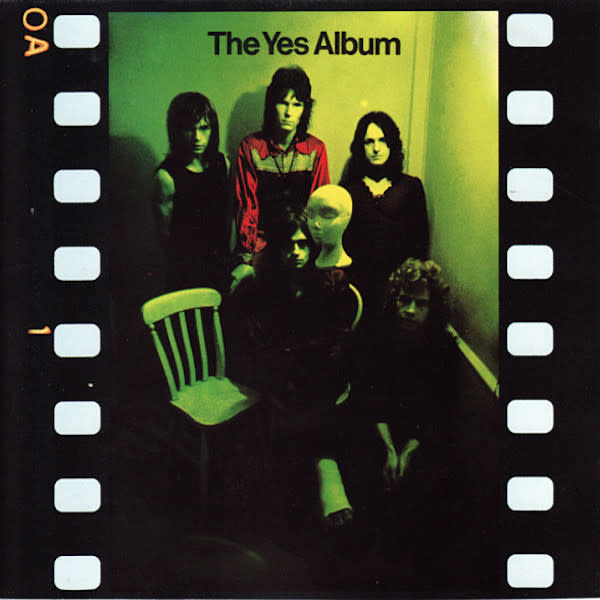
Credit: Atlantic
Yes made one of Rock’s Great Leaps on their third album, solidifying their lineup with the addition of Steve Howe. The guitarist’s wild pyrotechnics — drawing on psychedelia, folk, jazz and even country — elevated the band’s balanced attack on anthems like the interstellar three-part epic “Starship Trooper,” rollicking “Yours Is No Disgrace” and pastoral-turned-twangy “I’ve Seen All Good People.” (The addition of keyboardist Rick Wakeman on their second 1971 LP, Fragile, solidified the classic quintet. Speaking of which: How many bands have released two near-perfect albums in one year?) – R.R.
14. Funkadelic – Maggot Brain
Maggot Brain, the third and final album by Funkadelic’s original core quintet, is the pinnacle of their early acid rock — before they became a sprawling collective with a more synth-heavy sound. The title track’s epic 10-minute guitar solo, the late Eddie Hazel’s crowning achievement, looms large over the album. But the six remaining tracks are packed with sludgy rock, like on “Super Stupid,” while the sweet harmonies and gentle grooves of “Can You Get To That” and “Back In Our Minds” evoke the doo-wop style of George Clinton’s original ‘50s vocal group, the Parliaments. – A.S.
13. Paul and Linda McCartney – Ram
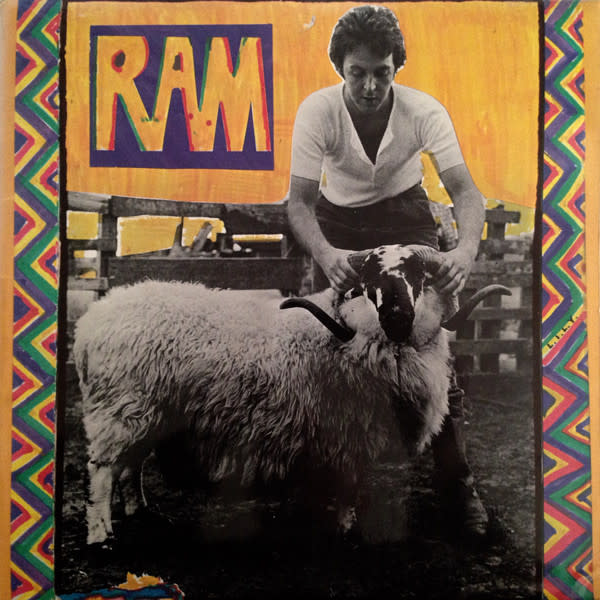
Credit: Apple
Unlike Paul McCartney’s DIY solo debut from the previous year, follow-up Ram — co-billed to wife and collaborator Linda — was actually recorded with a full cast of humans, including future Wings drummer Denny Seiwell and the New York Philharmonic. Somehow, though, it sounds just as scrappy and ramshackle as that first post-Beatles record — exactly the kind of low-key vibe that could elicit whistling and mouth-trumpet sounds on the ukulele ditty “Ram On.” McCartney tries out everything here: cornball blues-rock (“Smile Away”), fingerpicked folk (“Heart of the Country”) and spastic prog-pop (“Uncle Albert/Admiral Halsey”). Ram is the ultimate anti-algorithm album — these songs have no business sharing wax, and that’s part of the charm. – R.R.
12. Jethro Tull - Aqualung
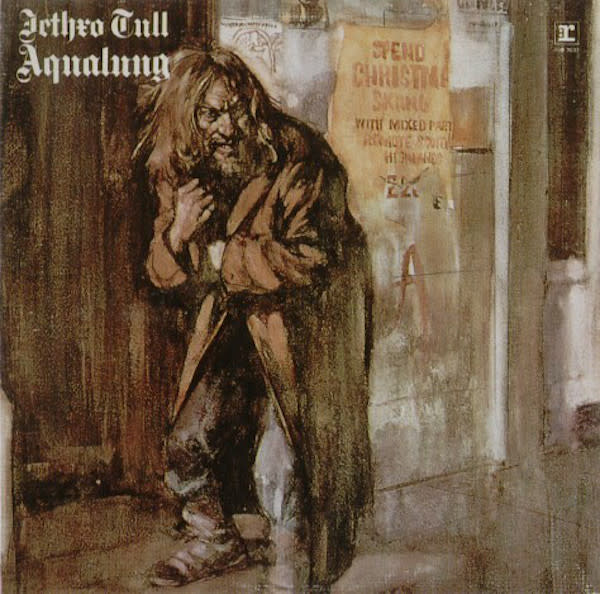
Credit: Reprise
Aqualung, Jethro Tull’s fourth studio LP, is generally considered the British band’s commercial breakthrough, further establishing their shift from blues to progressive rock. It’s often labeled a concept record because of a number of songs explore singer-songwriter Ian Anderson’s pointed critique of organized religion (“My God,” “Wind-Up” and “Hymn 43”). However, Anderson has rejected that idea — though Tull later offered their (somewhat satirical) take on the conceptual trend with 1972’s Thick as a Brick. Along with religion, Aqualung tackled other weighty subjects that remain relevant today, including homelessness (the iconic title track) and population growth (the chugging “Locomotive Breath”). And between the bombastic rockers, Aqualung showcased Tull’s acoustic folk side with “Wond’ring Aloud” and “Mother Goose,” a style further explored on their subsequent albums. - D.C.
11. The Rolling Stones – Sticky Fingers
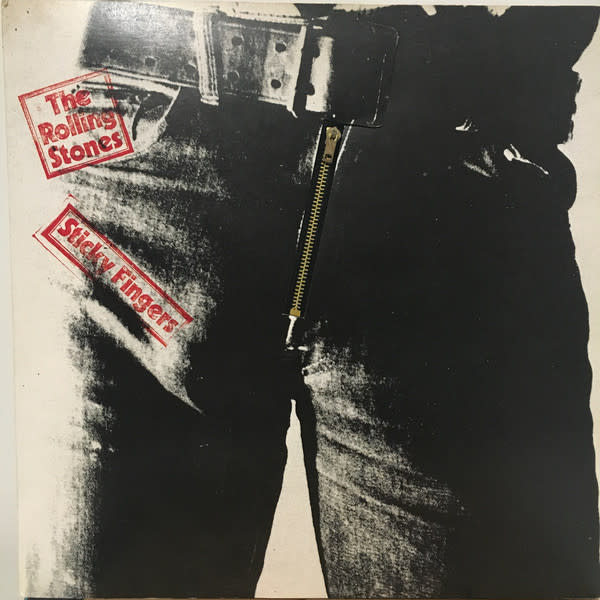
Credit: Rolling Stones
The Rolling Stones’ ninth studio album made an immediate impression with its Andy Warhol-designed cover, which features a man’s bulging crotch and a functional zipper. The songs sealed the deal, with the bluesy “Brown Sugar” and twangy “Wild Horses” helping make Sticky Fingers their first album to reach No. 1 in both the U.S. and U.K. In a 2005 Guitar World interview, Keith Richards called “Can’t You Hear Me Knockin’” one of his favorite Stones tracks. “[With] that jam at the end – we didn’t even know they were still taping,” he said. “We thought we’d finished. We were just rambling and they kept the tape rolling. It was only when we heard the playback we realized: ‘Oh they kept it going. Okay, fade it out there – no wait, a little bit more, a bit more…’ Basically, we realized we had two bits of music: there’s the song and there’s the jam.” – L.L.
10. Sly and the Family Stone – There’s a Riot Goin’ On
Six months after Marvin Gaye posed the question What’s Going On, one of his contemporaries darkly answered with the title of their own classic album, There’s a Riot Goin’ On. And the multiracial band behind uplifting hits like “Everyday People” — who had been the toast of Woodstock two years earlier — had evolved into slow, murky tracks partly recorded at Sly Stone’s Bel Air mansion with a Maestro Rhythm King-1 drum machine. The album only arrived after a long delay, but the music was decades ahead of its time. – A.S.
9. Carole King - Tapestry
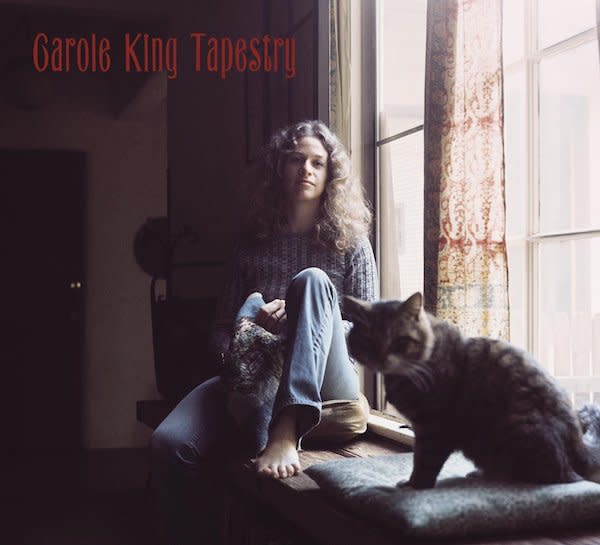
Credit: Ode / A&M
A transcendent pillar of soft-rock, Tapestry radiates well beyond its record-breaking commercial success. Doleful yet triumphant, the 12-track album distills complex emotion into three-minute songs the world could sing. Carole King’s second LP set a record for most consecutive weeks at No. 1 on Billboard by a female solo artist (15), and much of it remains in regular Adult Contemporary rotation, from the quaking “I Feel The Earth Move” to the lamenting “It’s Too Late,” plus “You’ve Got A Friend,” which James Taylor famously launched to No. 1 later in ‘71. Taylor and Joni Mitchell both sang backing vocals on Tapestry, which also included — at Taylor’s urging — King’s renditions of hit songs written for other artists: the Shirelles’ “Will You Love Me Tomorrow?” (1960) and Aretha Franklin’s little-known “(You Make Me Feel Like) A Natural Woman” (1967). Tapestry deservingly won Album of the Year at the ‘72 Grammy Awards and was immortalized in Beautiful: The Carole King Musical, which closed in 2019 after nearly six years on Broadway. – B.O.
8. Black Sabbath – Master of Reality
With their third LP, Master of Reality, Black Sabbath definitively proved that the flowery ‘60s were gone forever. Despite earning initially negative reviews, the album is now considered one of the band’s most vital works — cited as a precursor to doom, sludge and stoner metal. With the hazy “Sweet Leaf” (a tribute to marijuana), Ozzy Osbourne, Tony Iommi, Geezer Butler and Bill Ward established the record’s dark tenor. The bulldozing anti-war ode “Children of the Grave” became a staple, and “Into the Void” boasts a riff that Eddie Van Halen once called one of the greatest ever. Does it get any better than that? – D.K.
7. Yes - Fragile
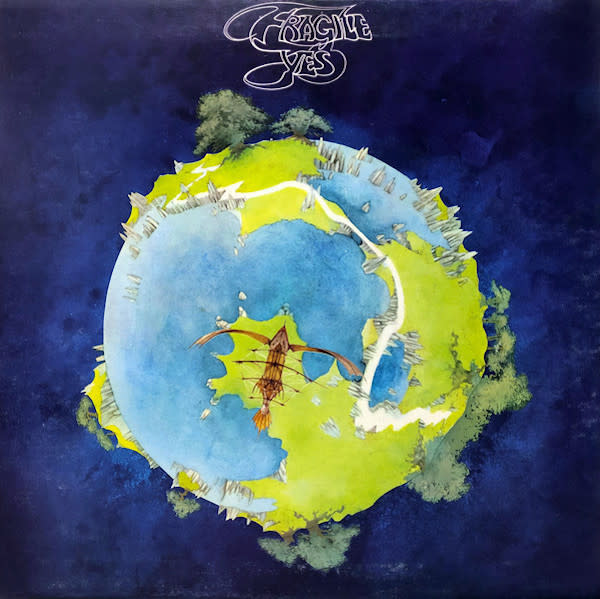
Credit: Atlantic
The prog-rock band’s fourth LP was their first with classically trained keyboard wizard Rick Wakeman, who’d recently played on sessions for several artists on this list (Cat Stevens, T. Rex, Elton John, David Bowie). And throughout these nine tracks, including the hit opener “Roundabout,” he pushed the band to more intricate, exciting places with his synth, organ and piano work. But the music isn’t the only highlight of this album: It was their first to feature a cover and inner paintings by artist Roger Dean, who also designed the band’s logo and became a regular collaborator. - J.S.
6. David Bowie – Hunky Dory
Anything but a God-awful small affair, David Bowie’s fourth album allowed the proto-rock star to reach into his grab bag of influences while hinting at the otherworldly excesses to come. He evokes Andy Warhol, Bob Dylan, Lou Reed and even his newborn son at various points on the 11-track album. But Hunky Dory is pre-Ziggy Bowie in his genre-swirling stride, harnessing folk, pop, and even spoken word poetry to flesh out his colorful vision. But his sense of otherness is never lost while striving for stardom — even a half-century later, anthem tracks like “Changes” and “Life on Mars?” still sound larger than life and utterly human. – L.S.
5. The Who – Who’s Next
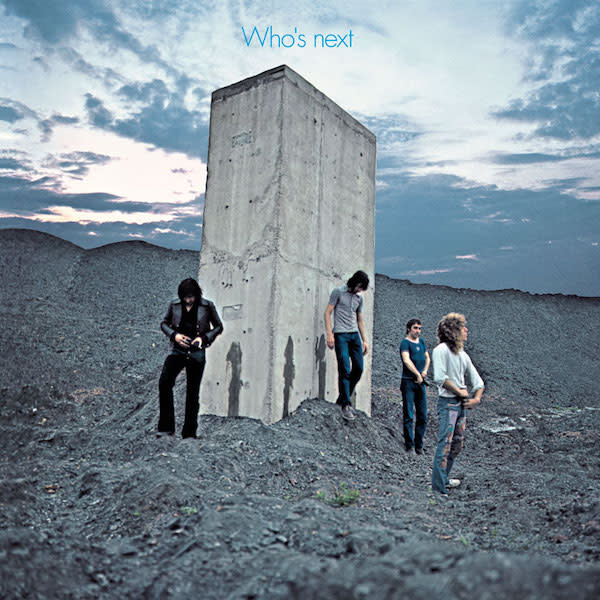
Credit: Track / Decca
The concept for Who’s Next’s famed, pee-themed cover art supposedly came from bassist John Entwistle and drummer Keith Moon, though only guitarist Pete Townshend authentically urinated. (The rest is poured water. Sorry, hooligans). And the music on the Who’s fifth studio LP is even more epic than the sleeve, featuring three classic singles originally envisioned for Townshend’s abandoned, post-Tommy rock opera, Lifehouse: “Baba O’Riley,” “Behind Blue Eyes” and “Won’t Get Fooled Again.” The latter’s peak Billboard position was only No. 15 – an important reminder that “epic” and “chart-topping” often have nothing to do with one another. – L.L.
4. Joni Mitchell – Blue
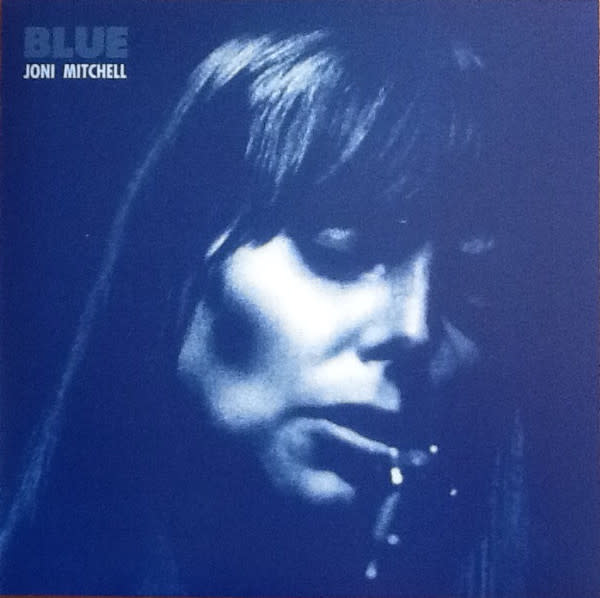
Credit: Reprise
Joni Mitchell’s acclaimed fourth album contains some of her most beloved songs, including the title track, “Carey,” “California” and the frequently covered “River,” rumored to chronicle her breakup with Graham Nash. The third track, “Little Green,” is one of her most personal, written in 1966 shortly after a heartbroken Mitchell signed the papers to place her newborn daughter up for adoption. After the story was exposed in 1993, Mitchell has been open about the difficult decision to give up her child, saying that she was “dirt poor” and unhappy at the time. The two reunited four years later. – L.L.
3. The Allman Brothers Band - At Fillmore East
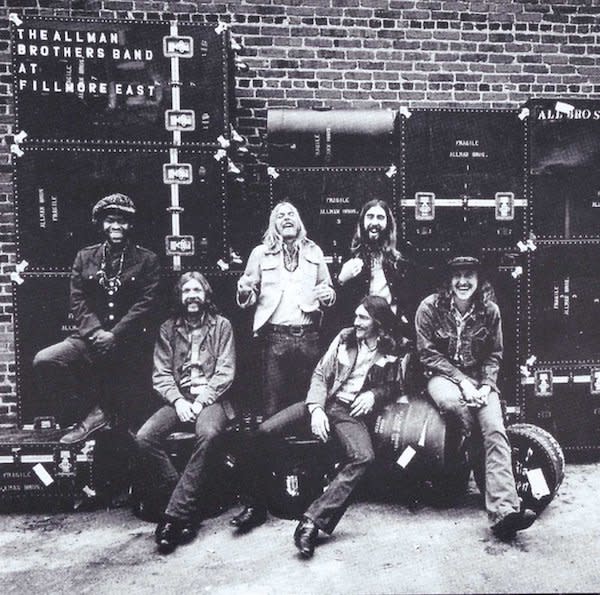
Credit: Capricorn
Live albums rarely capture a band at their absolute peak power. The Allman Brothers Band’s At Fillmore East is an exception. Seven months after this monster show, captured in March 1971 in New York City, their trajectory was forever changed with Duane Allman’s death from a motorcycle accident. But they were in full force here: Opening with a scorching version of “Statesboro Blues,” the double-LP offers a snapshot into what could have been. As the set goes on, the Allmans flex their muscular blend of Southern rock, jazzy jamming and sharp blues — the eventual template for other bands emerging from the region. Extended versions of “You Don’t Love Me” and “In Memory of Elizabeth Reed” showcased their musicianship, and the roaring 23-minute version of “Whipping Post” essentially helped coin the phrase “jam band.” In just seven songs, the Allmans redefined how powerful a live album could be. – D.K.
2. Marvin Gaye - What’s Going On
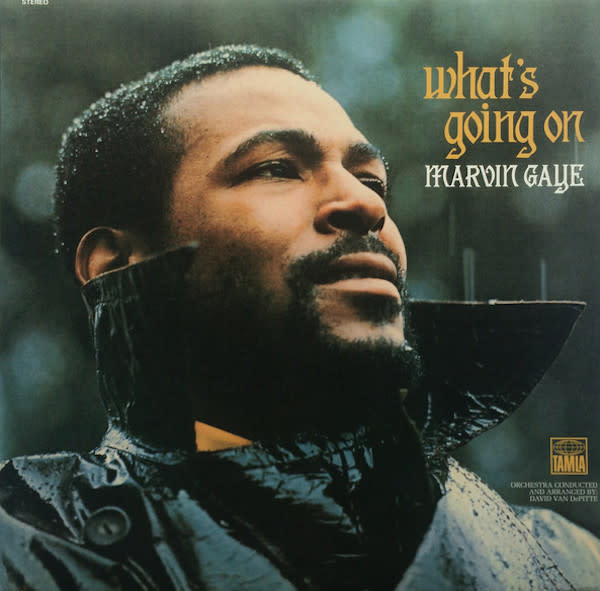
Credit: Tamla Motown
Marvin Gaye was known as the “Prince of Motown” early in his career. But his crumbling marriage and society’s racial uprising provoked an artistic shift on his 11th LP, as he swapped sensuality for serious introspection. The singer masterfully balanced silky melodies with weighty subjects: He explored drug addiction on “Flyin’ High (In the Friendly Sky),” highlighted the ghettos that upper-class Americans overlook on “Inner City Blues (Make Me Wanna Holler),” made a plea to nurture nature on “Mercy Mercy Me (The Ecology)” and offered a statement on post-war tragedy with the title track. What’s Going On, having transcended into a cultural landmark, still sounds fresh 50 years later. It’s also a sadly still-relevant reminder of this nation’s unshakeable injustices. – B.G.
1. Led Zeppelin – Untitled (Led Zeppelin IV)
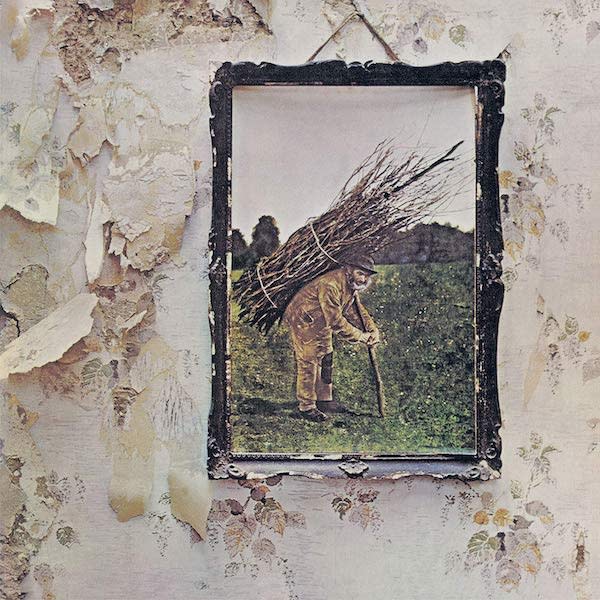
Credit: Atlantic
By the ‘70s, Led Zeppelin were the era’s definitive rock band. But according to many critics, their fame was built on unearned hype. So the British quartet kept their fourth LP untitled, letting their increasingly eclectic songs speak for themselves. The album, best known as “Led Zeppelin IV” (or “ZOSO”), is a masterclass in genre fusion, effortlessly melding hard rock, metal, folk and prog. The fidgety “Black Dog” drips with post-coitus sweat, and “Rock and Roll” nods to the glory days of ‘50s boogie. There’s also the sludge-filled “When The Levee Breaks,” the supremely nerdy “The Battle of Evermore” and the ubiquitous epic “Stairway To Heaven” – a must-learn for any guitarist. Fifty years later, what rock fan doesn’t own this record? – B.G.
To see our running list of the top 100 greatest guitarists of all time, click here.

